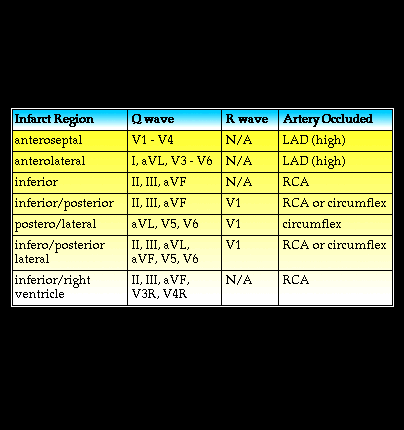
An abnormal Q wave identifies the location of the infarction within the heart in much the same way that ST segment elevation identiies the location of acute tansmural ischemia. The table shown here correlates the leads of the standard 12 lead body surface elctrocardiogram that demonstrate abnormal Q waves to the region of the myocardium with the infarction and, by inference, to the vessel most likely to be occluded. In general, the more leads having an abnormal Q wave, the more extensive the infarction. Note that when the infarction involves inferior/posterior and posterior/lateral regions an abnormal R wave appears in lead V1. This is the reciprocal of the Q wave that would be recorded by leads placed on the posterior chest wall in the V8 and V9 positions.
